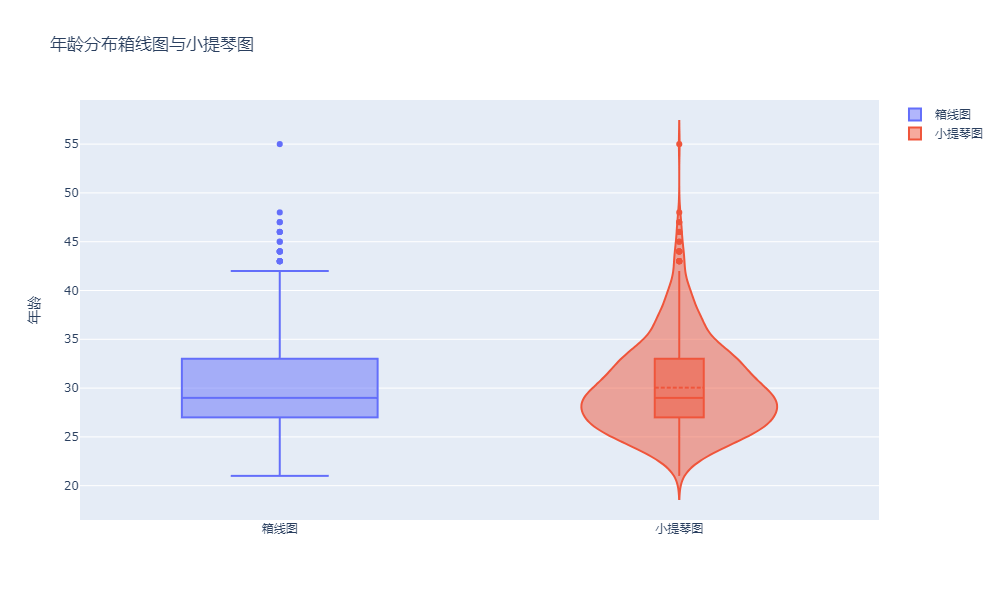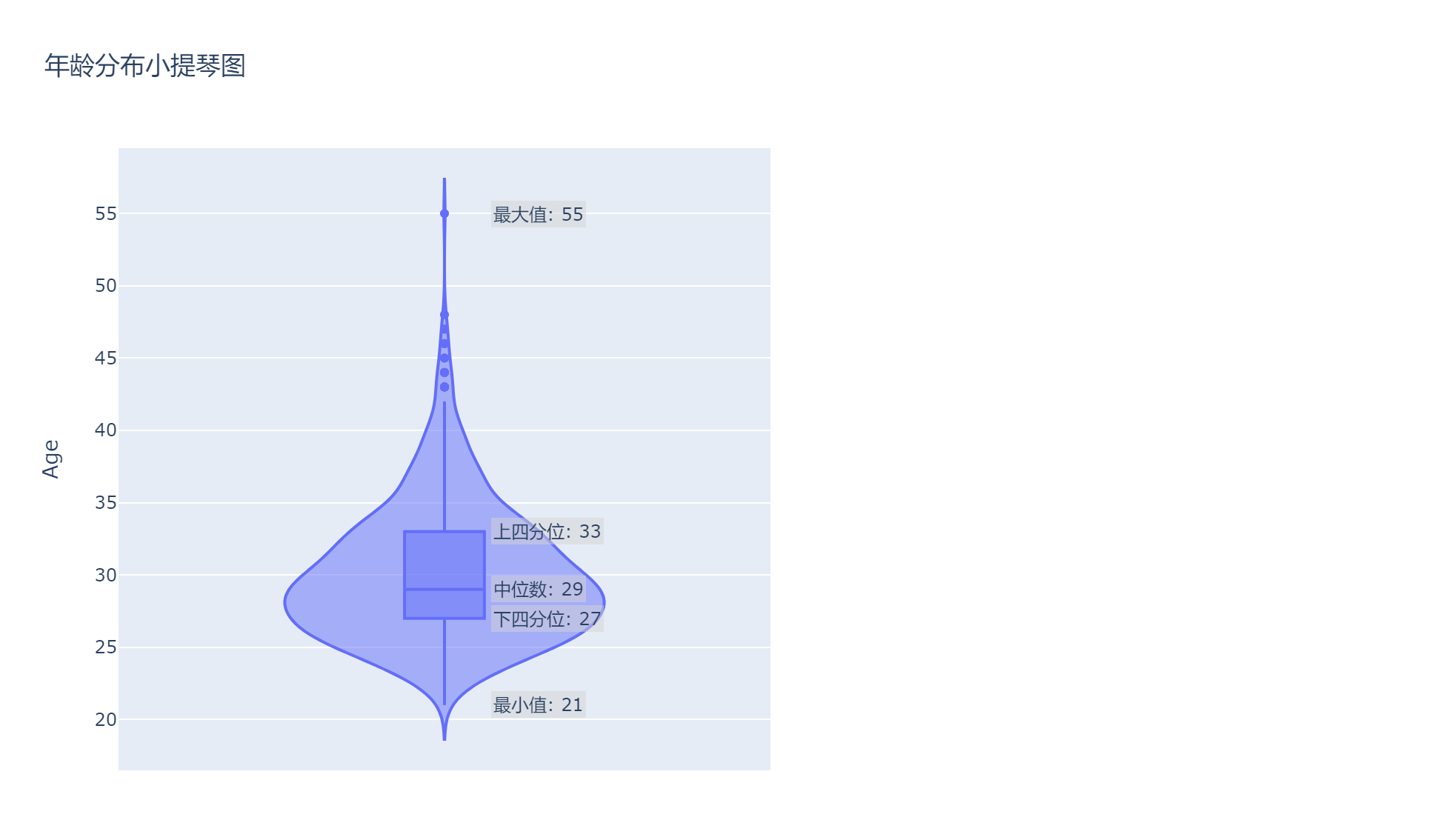import plotly.express as px
fig = px.violin(employee_dataset, y='Age', width=600, height=600, box=True, points="outliers",
title='年龄分布小提琴图')
# 计算中位值和四分位数
median = int(employee_dataset['Age'].median())
q1 = int(employee_dataset['Age'].quantile(0.25))
q3 = int(employee_dataset['Age'].quantile(0.75))
max_value = int(employee_dataset['Age'].max())
min_value = int(employee_dataset['Age'].min())
# 添加注解
annotations = [
dict(x=0.07, y=median, xanchor='left', yanchor='middle', text=f"中位数: {median}", showarrow=False,
bgcolor='rgba(211,211,211,0.5)', font=dict(size=12)),
dict(x=0.07, y=q1, xanchor='left', yanchor='middle', text=f"下四分位: {q1}", showarrow=False,
bgcolor='rgba(211,211,211,0.5)', font=dict(size=12)),
dict(x=0.07, y=q3, xanchor='left', yanchor='middle', text=f"上四分位: {q3}", showarrow=False,
bgcolor='rgba(211,211,211,0.5)', font=dict(size=12)),
dict(x=0.07, y=max_value, xanchor='left', yanchor='middle', text=f"最大值: {max_value}", showarrow=False,
bgcolor='rgba(211,211,211,0.5)', font=dict(size=12)),
dict(x=0.07, y=min_value, xanchor='left', yanchor='middle', text=f"最小值: {min_value}", showarrow=False,
bgcolor='rgba(211,211,211,0.5)', font=dict(size=12))
]
for ann in annotations:
fig.add_annotation(ann)
# 显示图表
fig.show()

